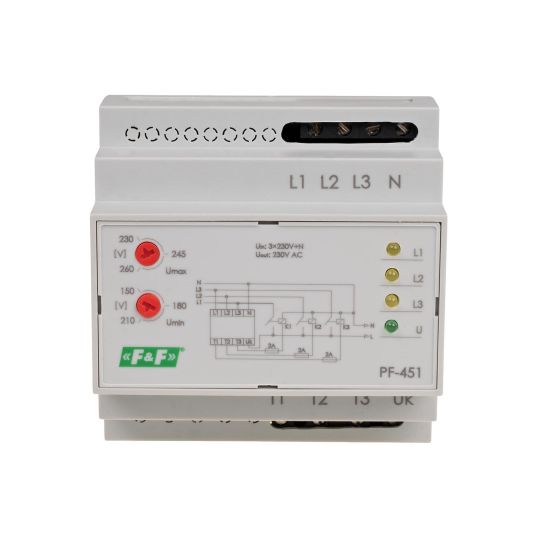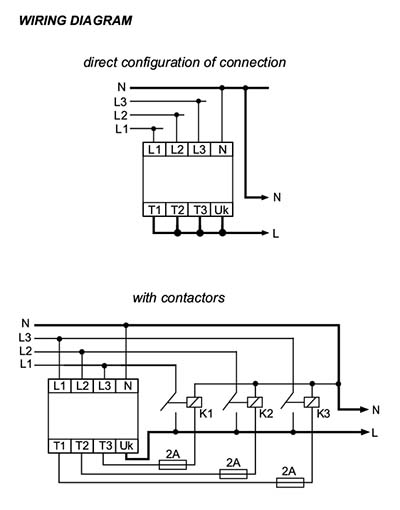





Functioning
The directly connected switch is used for supplying the single-phase circuit whose current-load does not exceed 16A. For the circuits that have a current-load higher that 16A, a configuration is used that consists of a switch and three contactors that have a properly selected current-carrying capacity. Three-phase voltage (3x230V+N) is supplied to the input of the switch (L1, L2, L3, N). Single-phase voltage (230V AC), i.e. the phase voltage of one of the phases, is directed to the output of the switch (T1, T2, T3). The electronic system of the switch controls voltage values of the phases supplied. The phase that has correct parameters is switched to the output of the switch. Phase switching sequence is not specified the phase that has the best parameters is always switched to the output. Switching to another phase that has correct parameters occurs only after a drop in values of parameters of the currently used phase. The switch-over time (required for voltage to occur at the output) after the decay of a currently activated phase is from 0.5 to 0.8 sec. (during this time the receivers are not supplied). Uk input is used for controlling the voltages activated. The system enables the activation of only one phase. In this way the simultaneous switching of voltages of two phases to the output is prevented. Such simultaneous switching of voltages might lead to a phase-to-phase fault. Also, the defect of the contactor (for example, a break in the coil circuit, suspending or burning out of the working contactor) will cause the switching of the receiver to another phase despite the fact that the voltage in a given phase is correct. If the contacts of the contactor are permanently closed, the system will not switch to another contactor despite the fact that the voltage in this phase is incorrect. After the activation of supply voltage (at least one phase), the system examines the correctness of voltages supplied for 2 seconds and only after that time the system switches the phase to the output. The switch provides the option of adjusting a lower voltage threshold (150V to 210V) and an upper voltage threshold (230V to 260V) at which switching-over occurs.
